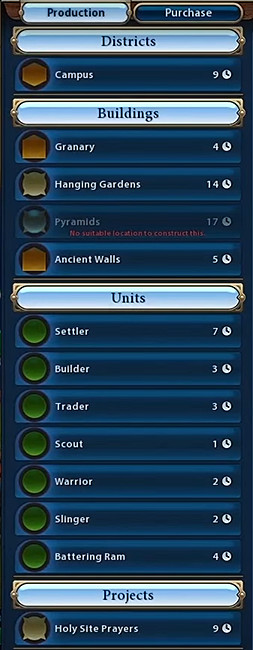KrikkitTwo
Immortal
- Joined
- Apr 3, 2004
- Messages
- 12,418
We know of 8 for sure that have been mentioned by name: Campus, Holy Site, Theater Square, Encampment, Harbor, Commercial Hub, Industrial Zone, and Entertainment District (though the last is a translation). That leaves 4 unaccounted for. Nearly all of the Civ V buildings could thematically fit into one of the known 8, so the last 4 could be almost anything.
The only possibility that comes to mind is an "Emergency Services" district (Police Station, Courthouse, Hospital, Medical Lab).
The housing Neighborhood appears to be an improvement (so you can build more than one), as does the Airport/Airbase (so that you can build more than one, and place it outside your borders, like you could in Civ III (iirc).
Well in terms of connection to game values
Campus-research
Holy Site-faith
Theater Square-culture
Encampment-military
Harbor-sea access
Commercial-gold
Industrial-production
Entertainment-happiness
(8)
that leaves tourism (9)
also there is whether or not the city center counts as a district (10)
Some to be special focus, ie not all cities/victory types will build them
Diplomacy..helps influence CS [either nearest or with trade route] (11)
Administrative...buildings to work with conquered cities (12)
Space Race...(13)


